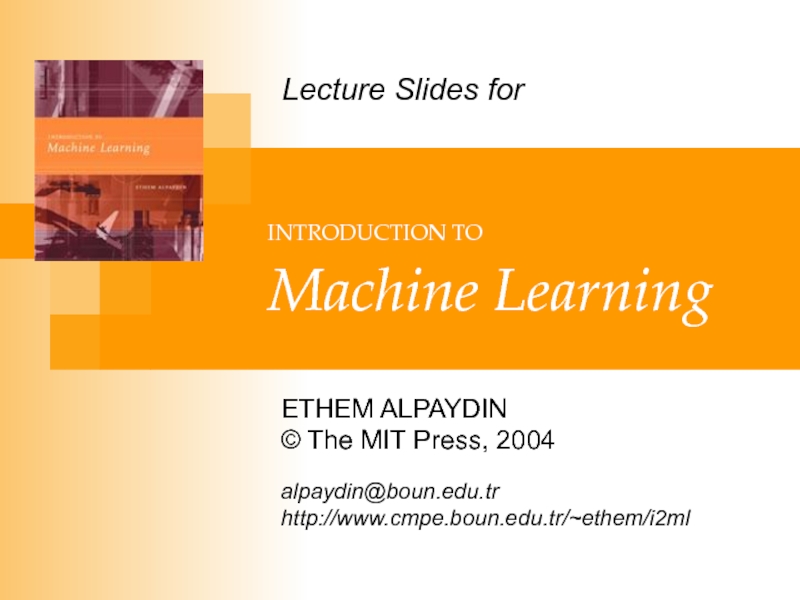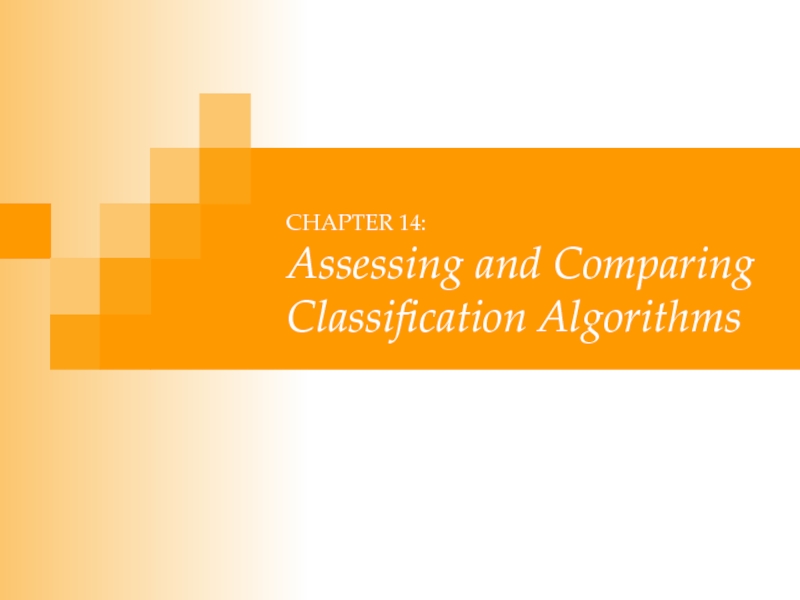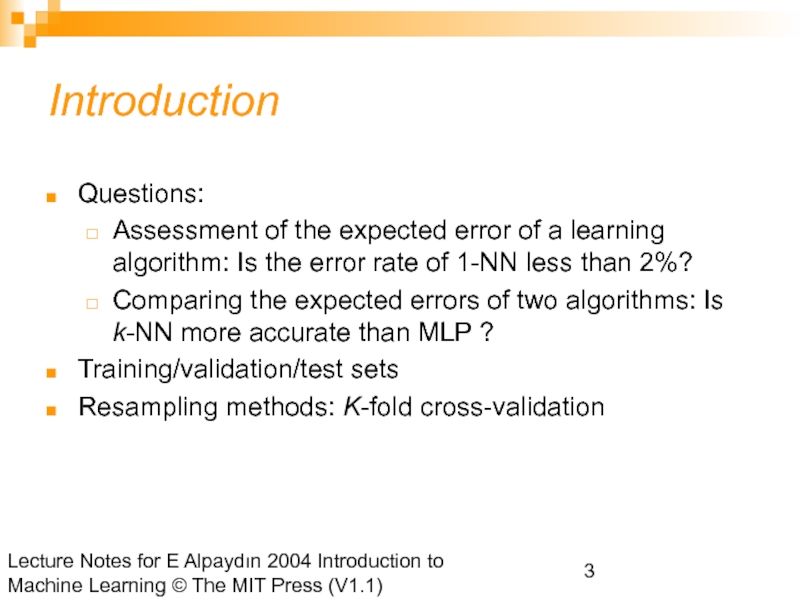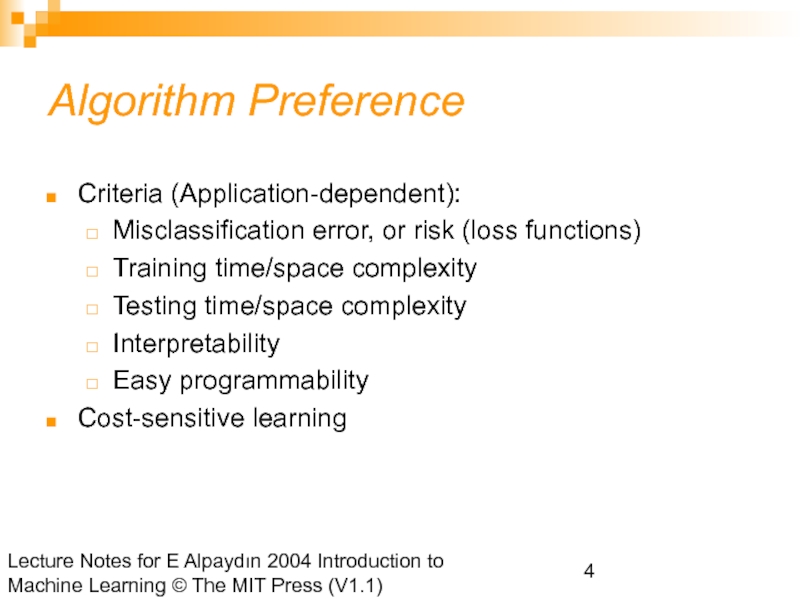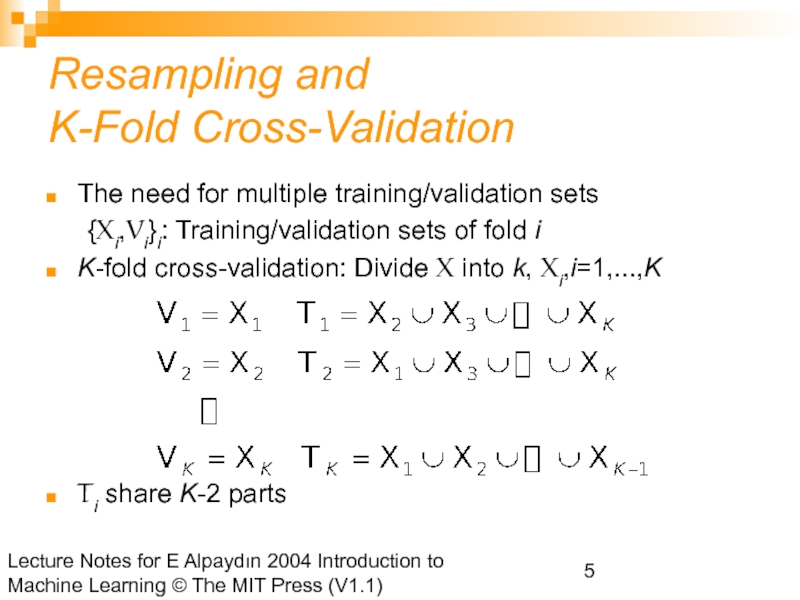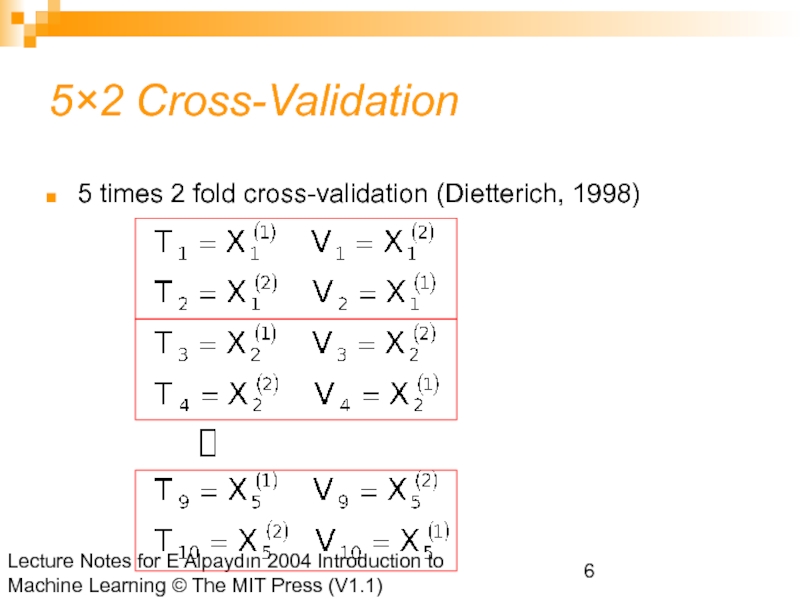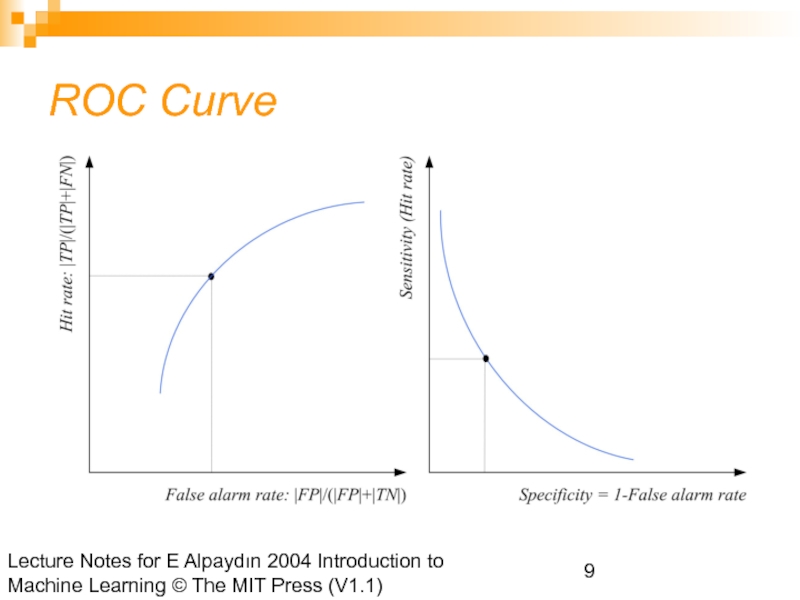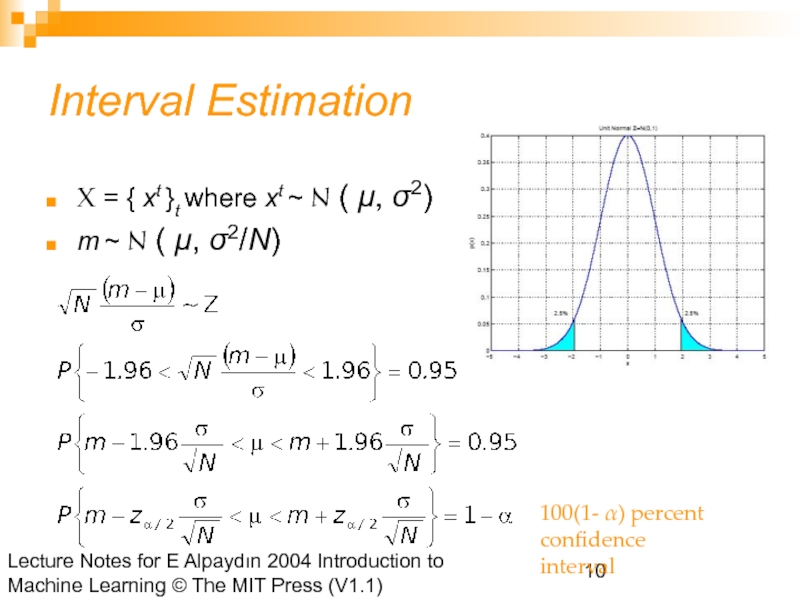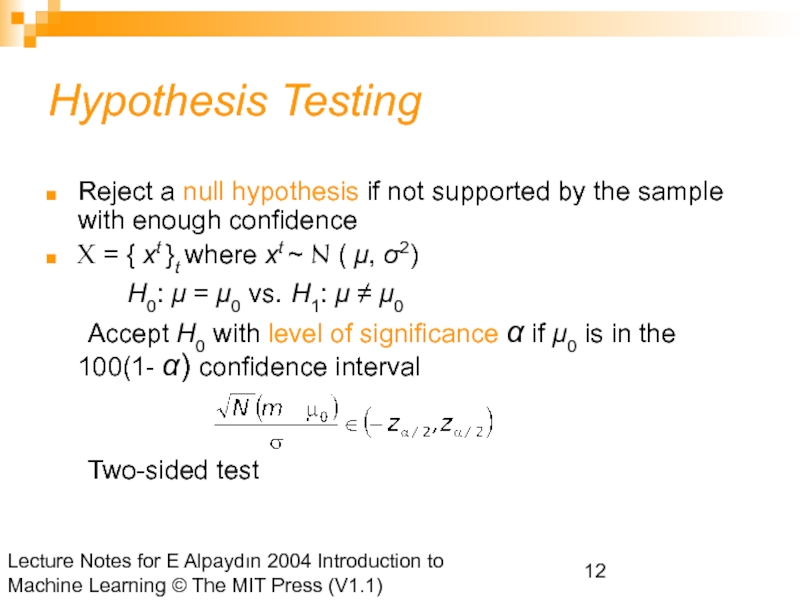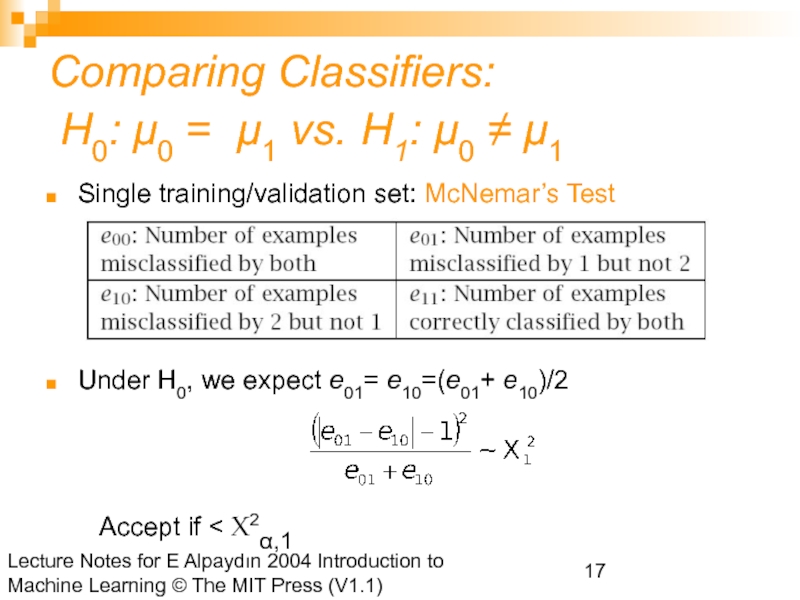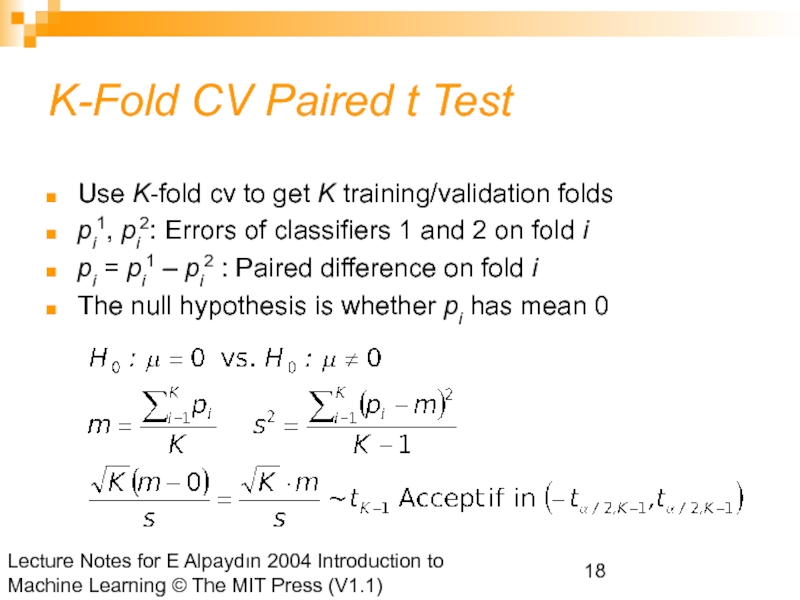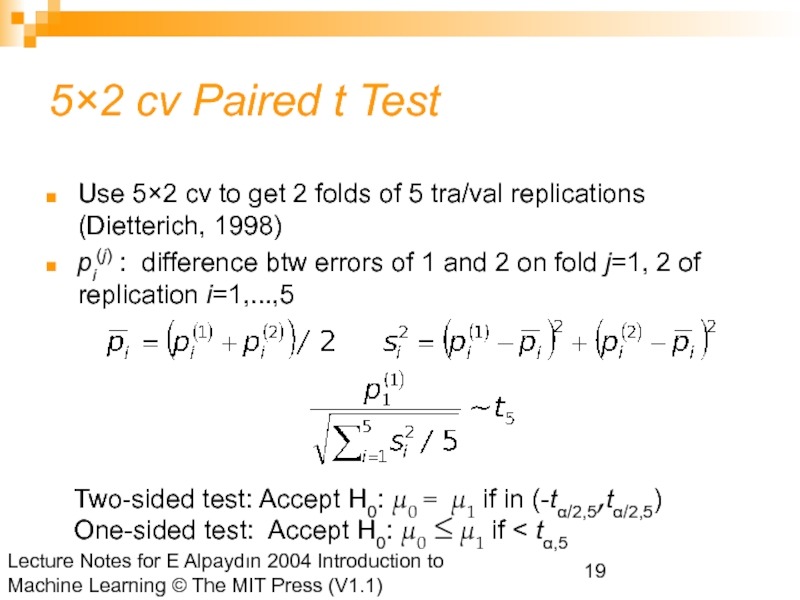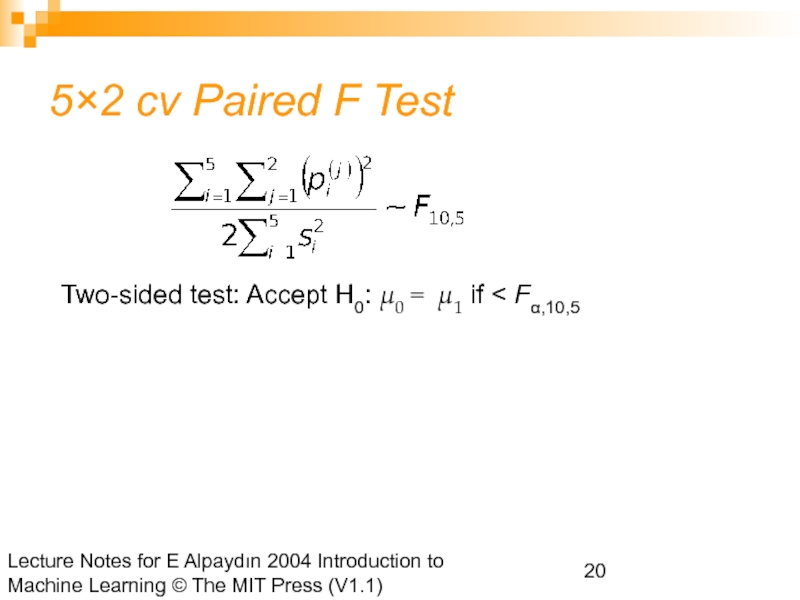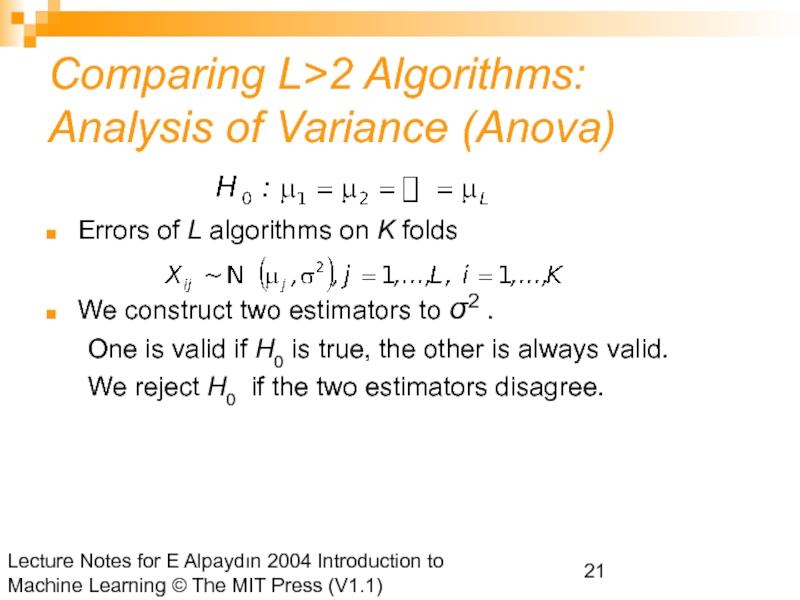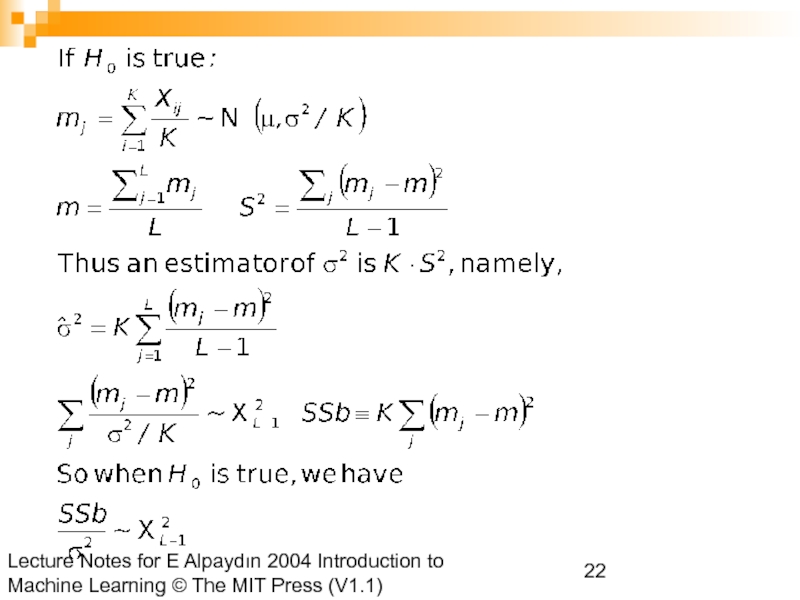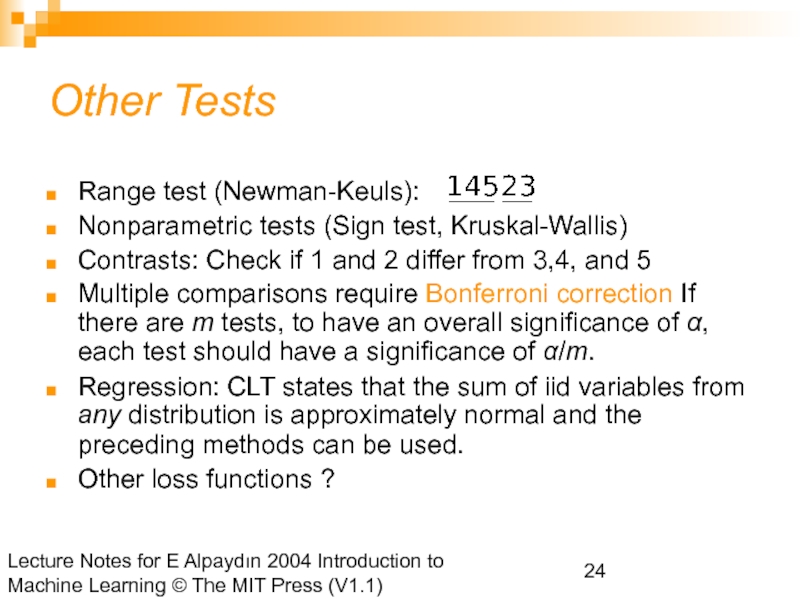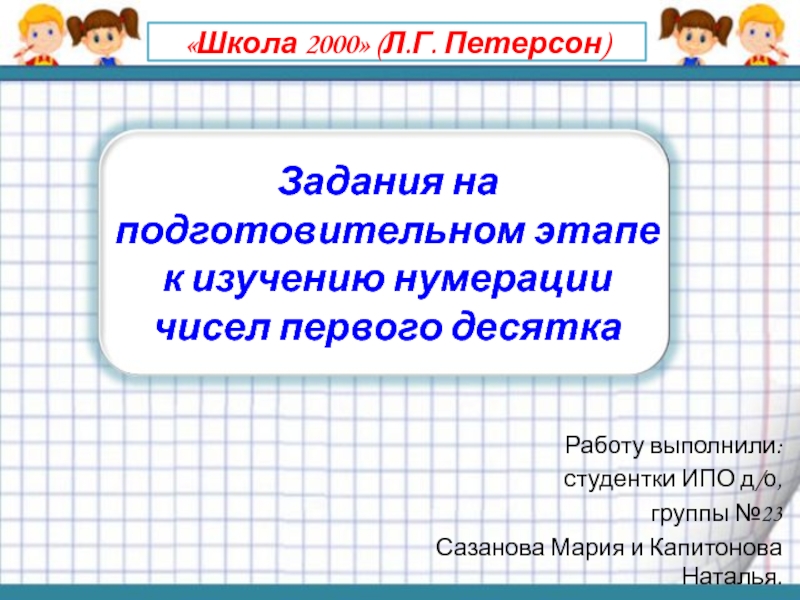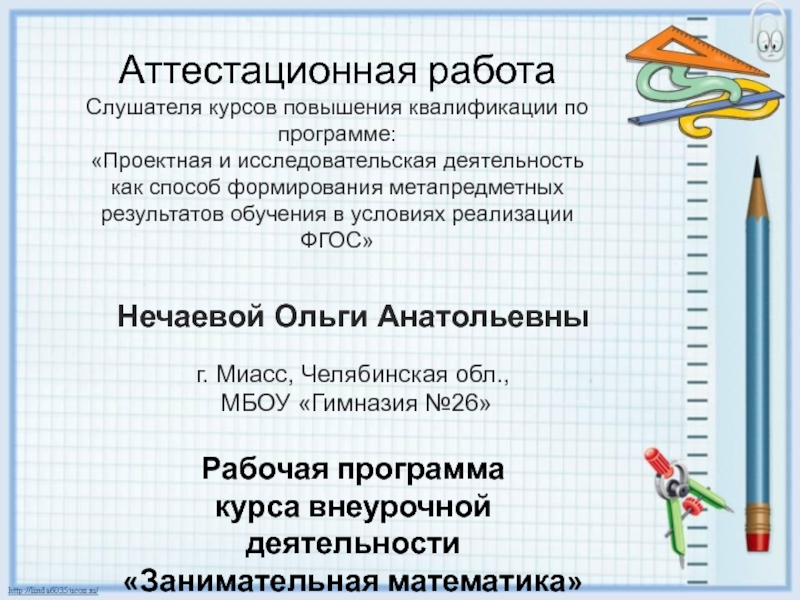- Главная
- Разное
- Дизайн
- Бизнес и предпринимательство
- Аналитика
- Образование
- Развлечения
- Красота и здоровье
- Финансы
- Государство
- Путешествия
- Спорт
- Недвижимость
- Армия
- Графика
- Культурология
- Еда и кулинария
- Лингвистика
- Английский язык
- Астрономия
- Алгебра
- Биология
- География
- Детские презентации
- Информатика
- История
- Литература
- Маркетинг
- Математика
- Медицина
- Менеджмент
- Музыка
- МХК
- Немецкий язык
- ОБЖ
- Обществознание
- Окружающий мир
- Педагогика
- Русский язык
- Технология
- Физика
- Философия
- Химия
- Шаблоны, картинки для презентаций
- Экология
- Экономика
- Юриспруденция
Assessing and comparing classification algorithms презентация
Содержание
- 1. Assessing and comparing classification algorithms
- 2. CHAPTER 14: Assessing and Comparing Classification Algorithms
- 3. Lecture Notes for E Alpaydın 2004 Introduction
- 4. Lecture Notes for E Alpaydın 2004 Introduction
- 5. Lecture Notes for E Alpaydın 2004 Introduction
- 6. Lecture Notes for E Alpaydın 2004 Introduction
- 7. Lecture Notes for E Alpaydın 2004 Introduction
- 8. Lecture Notes for E Alpaydın 2004 Introduction
- 9. Lecture Notes for E Alpaydın 2004 Introduction
- 10. Lecture Notes for E Alpaydın 2004 Introduction
- 11. Lecture Notes for E Alpaydın 2004 Introduction
- 12. Lecture Notes for E Alpaydın 2004 Introduction
- 13. Lecture Notes for E Alpaydın 2004 Introduction
- 14. Lecture Notes for E Alpaydın 2004 Introduction
- 15. Lecture Notes for E Alpaydın 2004 Introduction
- 16. Lecture Notes for E Alpaydın 2004 Introduction
- 17. Lecture Notes for E Alpaydın 2004 Introduction
- 18. Lecture Notes for E Alpaydın 2004 Introduction
- 19. Lecture Notes for E Alpaydın 2004 Introduction
- 20. Lecture Notes for E Alpaydın 2004 Introduction
- 21. Lecture Notes for E Alpaydın 2004 Introduction
- 22. Lecture Notes for E Alpaydın 2004 Introduction to Machine Learning © The MIT Press (V1.1)
- 23. Lecture Notes for E Alpaydın 2004 Introduction to Machine Learning © The MIT Press (V1.1)
- 24. Lecture Notes for E Alpaydın 2004 Introduction
Слайд 1INTRODUCTION TO
Machine Learning
ETHEM ALPAYDIN
© The MIT Press, 2004
alpaydin@boun.edu.tr
http://www.cmpe.boun.edu.tr/~ethem/i2ml
Lecture Slides for
Слайд 3Lecture Notes for E Alpaydın 2004 Introduction to Machine Learning ©
Introduction
Questions:
Assessment of the expected error of a learning algorithm: Is the error rate of 1-NN less than 2%?
Comparing the expected errors of two algorithms: Is k-NN more accurate than MLP ?
Training/validation/test sets
Resampling methods: K-fold cross-validation
Слайд 4Lecture Notes for E Alpaydın 2004 Introduction to Machine Learning ©
Algorithm Preference
Criteria (Application-dependent):
Misclassification error, or risk (loss functions)
Training time/space complexity
Testing time/space complexity
Interpretability
Easy programmability
Cost-sensitive learning
Слайд 5Lecture Notes for E Alpaydın 2004 Introduction to Machine Learning ©
Resampling and
K-Fold Cross-Validation
The need for multiple training/validation sets
{Xi,Vi}i: Training/validation sets of fold i
K-fold cross-validation: Divide X into k, Xi,i=1,...,K
Ti share K-2 parts
Слайд 6Lecture Notes for E Alpaydın 2004 Introduction to Machine Learning ©
5×2 Cross-Validation
5 times 2 fold cross-validation (Dietterich, 1998)
Слайд 7Lecture Notes for E Alpaydın 2004 Introduction to Machine Learning ©
Bootstrapping
Draw instances from a dataset with replacement
Prob that we do not pick an instance after N draws
that is, only 36.8% is new!
Слайд 8Lecture Notes for E Alpaydın 2004 Introduction to Machine Learning ©
Measuring Error
Слайд 9Lecture Notes for E Alpaydın 2004 Introduction to Machine Learning ©
ROC Curve
Слайд 10Lecture Notes for E Alpaydın 2004 Introduction to Machine Learning ©
Interval Estimation
X = { xt }t where xt ~ N ( μ, σ2)
m ~ N ( μ, σ2/N)
100(1- α) percent
confidence
interval
Слайд 11Lecture Notes for E Alpaydın 2004 Introduction to Machine Learning ©
When σ2 is not known:
Слайд 12Lecture Notes for E Alpaydın 2004 Introduction to Machine Learning ©
Hypothesis Testing
Reject a null hypothesis if not supported by the sample with enough confidence
X = { xt }t where xt ~ N ( μ, σ2)
H0: μ = μ0 vs. H1: μ ≠ μ0
Accept H0 with level of significance α if μ0 is in the 100(1- α) confidence interval
Two-sided test
Слайд 13Lecture Notes for E Alpaydın 2004 Introduction to Machine Learning ©
One-sided test: H0: μ ≤ μ0 vs. H1: μ > μ0
Accept if
Variance unknown: Use t, instead of z
Accept H0: μ = μ0 if
Слайд 14Lecture Notes for E Alpaydın 2004 Introduction to Machine Learning ©
Assessing Error:
H0: p ≤ p0 vs. H1: p > p0
Single training/validation set: Binomial Test
If error prob is p0, prob that there are e errors or less in N validation trials is
1- α
Accept if this prob is less than 1- α
N=100, e=20
Слайд 15Lecture Notes for E Alpaydın 2004 Introduction to Machine Learning ©
Normal Approximation to the Binomial
Number of errors X is approx N with mean Np0 and var Np0(1-p0)
Accept if this prob for X = e is
less than z1-α
1- α
Слайд 16Lecture Notes for E Alpaydın 2004 Introduction to Machine Learning ©
Paired t Test
Multiple training/validation sets
xti = 1 if instance t misclassified on fold i
Error rate of fold i:
With m and s2 average and var of pi
we accept p0 or less error if
is less than tα,K-1
Слайд 17Lecture Notes for E Alpaydın 2004 Introduction to Machine Learning ©
Comparing Classifiers:
H0: μ0 = μ1 vs. H1: μ0 ≠ μ1
Single training/validation set: McNemar’s Test
Under H0, we expect e01= e10=(e01+ e10)/2
Accept if < X2α,1
Слайд 18Lecture Notes for E Alpaydın 2004 Introduction to Machine Learning ©
K-Fold CV Paired t Test
Use K-fold cv to get K training/validation folds
pi1, pi2: Errors of classifiers 1 and 2 on fold i
pi = pi1 – pi2 : Paired difference on fold i
The null hypothesis is whether pi has mean 0
Слайд 19Lecture Notes for E Alpaydın 2004 Introduction to Machine Learning ©
5×2 cv Paired t Test
Use 5×2 cv to get 2 folds of 5 tra/val replications (Dietterich, 1998)
pi(j) : difference btw errors of 1 and 2 on fold j=1, 2 of replication i=1,...,5
Two-sided test: Accept H0: μ0 = μ1 if in (-tα/2,5,tα/2,5)
One-sided test: Accept H0: μ0 ≤ μ1 if < tα,5
Слайд 20Lecture Notes for E Alpaydın 2004 Introduction to Machine Learning ©
5×2 cv Paired F Test
Two-sided test: Accept H0: μ0 = μ1 if < Fα,10,5
Слайд 21Lecture Notes for E Alpaydın 2004 Introduction to Machine Learning ©
Comparing L>2 Algorithms: Analysis of Variance (Anova)
Errors of L algorithms on K folds
We construct two estimators to σ2 .
One is valid if H0 is true, the other is always valid.
We reject H0 if the two estimators disagree.
Слайд 24Lecture Notes for E Alpaydın 2004 Introduction to Machine Learning ©
Other Tests
Range test (Newman-Keuls):
Nonparametric tests (Sign test, Kruskal-Wallis)
Contrasts: Check if 1 and 2 differ from 3,4, and 5
Multiple comparisons require Bonferroni correction If there are m tests, to have an overall significance of α, each test should have a significance of α/m.
Regression: CLT states that the sum of iid variables from any distribution is approximately normal and the preceding methods can be used.
Other loss functions ?
